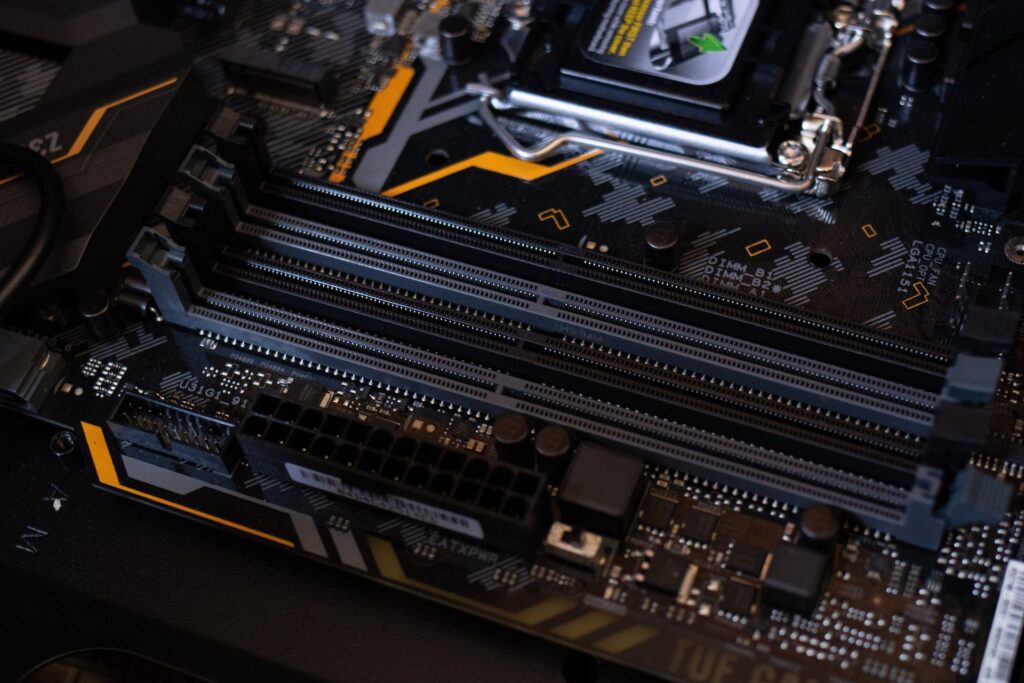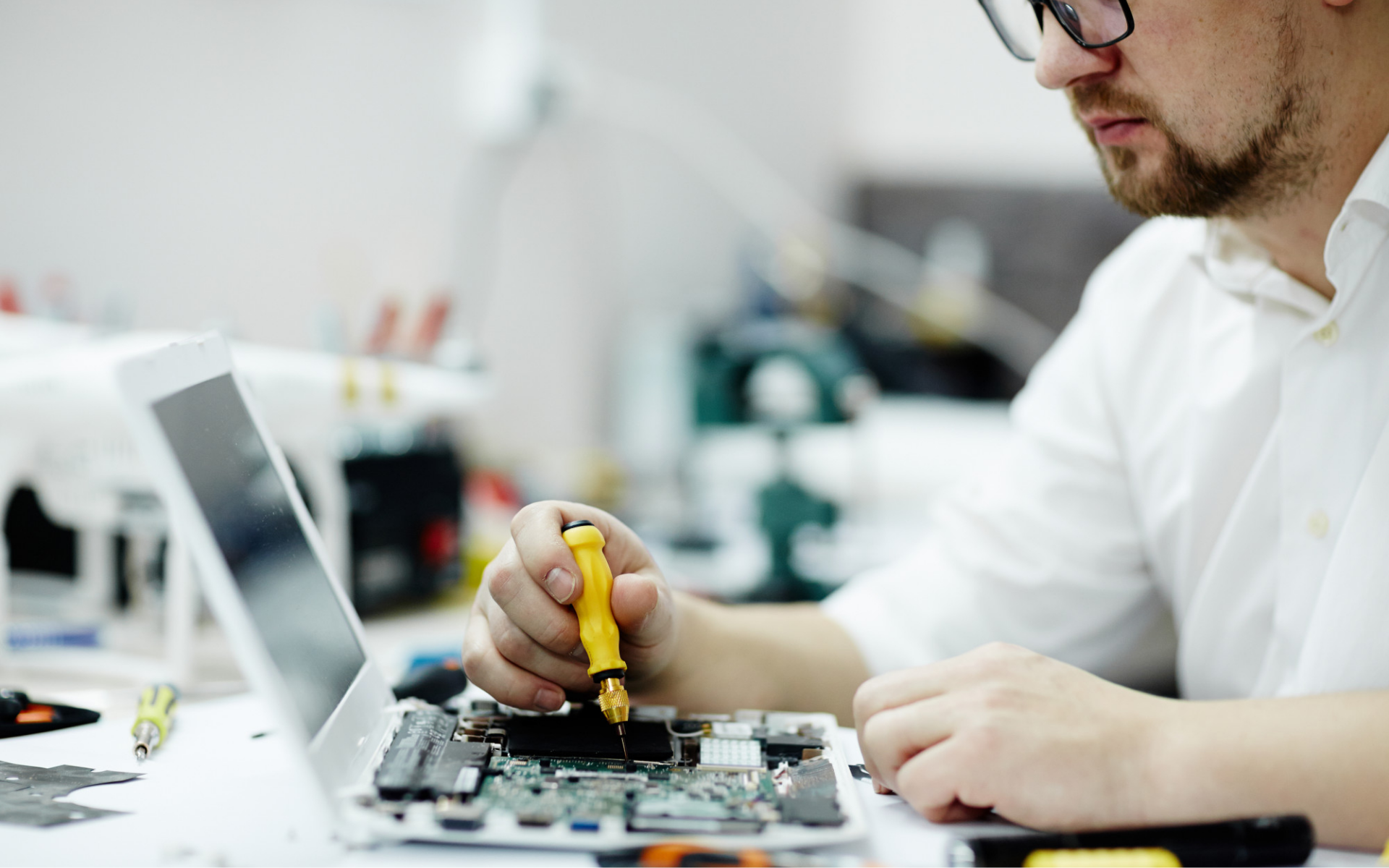Having a strong and personalized gaming laptop can greatly improve your gaming experience in the quickly changing world of gaming. Here’s the place to be if that you’re thinking how to build a gaming laptop that suits your needs. We’ll take you step-by-step through the process in this extensive guide, making sure you have all the knowledge required to build your ideal gaming machine.
Table of Contents
Understanding the Basics: Components You Need
It takes extensive knowledge of the key parts that comprise a potent gaming setup to build a gaming laptop. Every part is essential to the the overall outcome and gaming capabilities of your laptop.
1. Central Processing Unit (CPU): The Heart of Your Rig

The CPU, sometimes called the computer’s brain, is in charge of carrying out commands from games and applications. A few things to think about when selecting a CPU for your gaming laptop are clock speed, thread count, and core count. A laptop with numerous cores and threads can multitask effectively, and a quicker clock speed guarantees speedier processing. Popular options are AMD Ryzen and Intel Core i7 CPUs, which are renowned for their outstanding capabilities in gaming applications.
2. Graphics Processing Unit (GPU): Bringing Your Games to Life

When it comes to gaming, among the most important components is the graphics card, or GPU. It produces graphics and movies, guaranteeing fluid gameplay and breathtaking sights. There are two types of GPUs available for gaming laptops: integrated and dedicated. For those who enjoy gaming, dedicated GPUs like AMD Radeon and NVIDIA GeForce provide exceptional performance. They have a dedicated VRAM (Video Random Access Memory), which has an immediate effect on the resolution and graphical quality of a game.
3. Random Access Memory (RAM): Boosting Speed and Performance

RAM is the short-term memory on your laptop, where data is stored for easy access by the CPU. Fast performance is ensured when games or resource-intensive apps are operating with enough RAM. It is advised to have at least 16GB of RAM for gaming. It enables your laptop to perform several things at once without stuttering, including the operating system, background apps, and the game.
4. Storage Options: SSD vs. HDD – Making the Right Choice

There are two main choices for storage: Hard Disk Drives (HDD) and Solid State Drives (SSD). Compared to HDDs, SSDs are quieter, faster, and more dependable. They greatly speed up system responsiveness and cut down on game loading times. HDDs, on another hand, are less expensive and offer higher storage capabilities. To get a faster gaming experience, it’s best to use an SSD as the main storage option on a gaming laptop. If you require more storage, you can utilize an external HDD.
5. Motherboard Selection: Ensuring Compatibility and Expandability

The motherboard connects all the parts and peripherals together, acting as the foundation of your gaming laptop. Make sure the motherboard you choose is compatible with the CPU and GPU of your choice. In addition, take into account features like expansion slots, audio outputs, and USB connections that are accessible for future upgrades. For stability and dependability, choose a motherboard made by a reputed manufacturer such as ASUS, MSI, or Gigabyte.
Comprehending these basic elements is essential since they serve as the cornerstone of your laptop for gaming. From the topic of how to build a gaming laptop you may build a strong and effective gaming PC that meets your unique needs by carefully selecting the CPU, GPU, RAM, storage, and motherboard.
Step-by-Step Guide: How to Build A Gaming Laptop

Now that you are aware of the essential parts, let’s get started on how to build a gaming laptop easily.
1. Gather Your Components: Ensuring You Have Everything You Need
Make sure you have all the parts you need on hand before you begin assembling your gaming laptop:
– Central Processing Unit (CPU): The brain of your laptop.
– Graphics Processing Unit (GPU): In charge of producing pictures and videos.
– Random Access Memory (RAM): Provides fast access to data for your CPU.
– Storage: Choose between Solid State Drive (SSD) for speed or Hard Disk Drive (HDD) for storage capacity.
– Motherboard: The main circuit board where all components connect.
– Cooling System: Essential to prevent overheating.
– Power Supply Unit (PSU): Supplies power to all components.
– Display Panel: For laptops with external display options.
– Keyboard, Trackpad, and Other Peripherals: Depending on your preferences.
2. Preparing Your Workspace: Creating an Organized and Safe Environment
Provide a spotless, well-lit workspace with enough space for you to arrange your parts. To stop electrostatic discharge, or which can harm delicate components, use an anti-static mat and put on an anti-static wristband. Keep all of your tools close to hand, including thermal paste and screwdrivers.
3. Assembling the Motherboard: Securing the Foundation of Your Laptop

Put your computer’s motherboard on the anti-static pad with caution. After installing the CPU, make sure it is aligned correctly and fastened firmly. To maintain the ideal CPU temperature, apply thermal paste to the CPU and then install the cooling system. Place the RAM modules in the motherboard’s corresponding slots.
4. Installing the CPU and GPU: Powering Up Your Gaming Experience
After positioning the GPU into the proper motherboard slot, fasten it in place using screws. Attach power lines to the GPU from the PSU. Make sure every part fits snugly and is seated properly.
5. Adding RAM and Storage: Boosting Speed and Capacity
After gently pressing the RAM sticks into the RAM slots, they should snap into place. Utilizing SATA or M.2 connectors, attach the storage device (SSD or HDD) to the motherboard. Place the storage device firmly inside the laptop’s case so that it cannot move while the device is operating.
6. Connecting Peripherals: Enhancing Your Gaming Setup
Attach the trackpad, keyboard, display panel, and any additional peripherals you have selected. As you connect the required cables, make sure the connection is secure. To prevent loose cables that could cause issues, double-check every connection.
7. Testing Your Laptop: Ensuring Everything Works Seamlessly
Turn on your laptop and make sure everything is working properly before sealing the casing. To verify that the motherboard acknowledges every piece of inserted hardware, access the BIOS or UEFI. Ascertain that your laptop is prepared for use by installing the operating system and drivers.
If you carefully follow these instructions, you will be able to construct a gaming laptop that meets your needs. Recall that throughout the process, persistence and particular attention to every detail are essential. Wishing you luck and pleasure in your personalized gaming device!
Optimizing Your Gaming Experience

Although by going further on the topic how to build a gaming laptop, your laptop is now set up, there are still some things you can do to get the most out of it. After constructing your gaming laptop, one of the most important steps is to optimize your gaming experience. It entails adjusting different parts of the hardware and software on your laptop to guarantee lag-free gaming, excellent performance, and extended life. This is a thorough description of the optimization procedure:
1. Updating Drivers:
To guarantee optimal performance from all of your hardware components, it is imperative that you keep your drivers up to date. Updates for graphics card drivers in particular are released often to improve compatibility with the newest games, optimize performance in games, and address issues. To get the most recent drivers, go to the official websites of the companies that make your GPU and other hardware parts. Updates on a regular basis can greatly enhance your gaming experience by delivering improved performance and stability.
2. Overclocking Your GPU:
The process of overclocking involves raising your graphics card’s clock speed and RAM above the limits set by the manufacturer. It can result in noticeable gains in gaming performance. Still, it’s important to proceed cautiously when overclocking. Utilize dependable software tools made for the GPU model you are using, and adhere to online overclocking recommendations. When you are testing your overclocked settings, pay attention to stability and temperature. When done correctly, overclocking can lead to faster frame rates and more fluid gameplay.
3. Cooling Solutions:
Maintaining peak performance and avoiding overheating, which can result in slowdown and a worsened gaming experience, depend on effective cooling. Think about spending money on extra cooling options, including laptop cooling stands or cooling pads with integrated fans. By enhancing ventilation, releasing heat, and maintaining a safe operating temperature for your laptop, these accessories help guarantee steady performance even during prolonged gaming sessions.
4. Optimizing In-Game Settings:
There are several graphics settings available for each game, which may be changed to balance performance and visual quality. Adjust these parameters according to the specifications of your laptop. For higher frame rates, turn down demanding settings like anti-aliasing, reflections, and shadows. Furthermore, certain games have presets (such low, medium, and high) that automatically change a number of graphical settings. Try adjusting these presets to see which combination best suits your hardware configuration in terms of both smooth gameplay and visual integrity.
5. Regular Maintenance and Cleaning:
Although it is sometimes disregarded, routine maintenance is essential to the long-term functionality of your gaming laptop. Dust and dirt should be kept off of your laptop, especially the area surrounding the fans and vents. To carefully remove dust and keep the cooling system clear, use compressed air. To maintain a clean and effective system, you should also update your operating system, remove any unneeded apps, and run antivirus checks as part of software maintenance.
Through adherence to these optimization strategies, you may guarantee optimal performance from your gaming laptop, resulting in a fluid and engaging gaming encounter. Keep in mind that every laptop is different, so you should play around with these improvements to discover the ideal configuration that works best for your particular hardware and gaming style.
Conclusion: How to Build a Gaming Laptop
Best wishes! You’ve just entered the world of gaming hardware and are in for an exciting journey. You’ve gained useful skills and saved a significant amount of money by learning how to build a gaming laptop from scratch. Designed to provide the best possible gaming experience, your personalized gaming laptop is more than merely an item of technology. It’s an expression of your enthusiasm for gaming.
Recall that how to build a gaming laptop is more about your acquired understanding and self-assurance than it is about the actual parts. Savor the fluid graphics, blazingly quick processing, and captivating action as you immerse yourself in the gaming universe with your recently constructed setup. Every accomplishment, every task finished, and every virtual environment visited bears witness to your skill and commitment.
Now go ahead and turn on your laptop and start playing games! Your gaming laptop will be your dependable friend, realizing your gaming fantasies as you explore enigmatic dungeons, battle legendary animals, or conquer cosmos.
We appreciate you coming along for the ride. May your gaming experiences be absolutely nothing short of remarkable, with great frame rates and quick loading times. Go for it!
Frequently Asked Questions (FAQs)

Here are some solutions to commonly asked issues regarding how to build a gaming laptop, which should allay some typical worries.
Q1: Is building a gaming laptop cost-effective compared to buying a pre-built one?
A: Customizing your components when building a gaming laptop can save you money in comparison to expensive pre-built solutions.
Q2: Can I upgrade my gaming laptop in the future?
A: Yes, you may improve your laptop’s performance as technology progresses by upgrading its RAM and storage, which are features included on the majority of gaming laptops.
Q3: What safety precautions should I take while building my gaming laptop?
A: To avoid damage, make sure you handle components carefully, operate in an anti-static environment, and according to the manufacturer’s recommendations.
Q4: Can I Make My Own Gaming Laptop?
A: Of course! You may customize your gaming laptop to fit your needs and budget by building it yourself. With the correct parts and advice, you can put together a strong gaming PC that fulfills all of your requirements.
Q5: What Parts Do You Need to Build a Gaming Laptop?
A: Essential parts for building a gaming laptop are a strong CPU, a top-tier GPU, enough RAM, quick storage (SSD suggested), a suitable motherboard, and a good cooling system. In order to pull it all together, don’t forget a strong chassis and a dependable power supply.
Q6: Can a Regular Laptop Be Used as a Gaming Laptop?
A: While some games can be played on a conventional laptop, these devices frequently lack the dedicated graphics processing power and cooling systems required for prolonged gaming sessions. Strong GPUs and effective cooling are features that are specifically added to gaming laptops to guarantee fluid gameplay without overheating.
Q7: Can I Use HP as a Gaming Laptop?
A: Indeed, HP provides aficionados with gaming laptops. For high-quality gaming performance, look for the HP Omen or Pavilion Gaming series. Verify that the particular model you select satisfies your preferred gameplay specifications.
Q8: How to Build a Gaming Laptop at Home?
A: Because of its small size and complex architecture, creating a laptop within the house is more difficult than assembling a desktop PC. As laptops are assembled by manufacturers in controlled facilities, it’s not a typical do-it-yourself activity. Upgrade particular parts (such RAM or storage) for a personalized laptop instead of starting from scratch.
Q9: Is It Cheaper to Build a Laptop?
A: It is not cost-effective to build a laptop from scratch because it requires specialized parts and technical know-how. But, if you already have a laptop, replacing some of its parts—like upgrading to an SSD or adding more RAM—can be an affordable method to improve speed without going over budget.
Q10: Can I Build a Laptop Like a PC?
A: Because of their dissimilar architectures and designs, laptops and desktop PCs are difficult to construct in the same way. Although some laptop parts are customizable, it’s more complicated than creating a PC. Consider getting a professional to fix the laptop or replace a few components to increase its performance.

